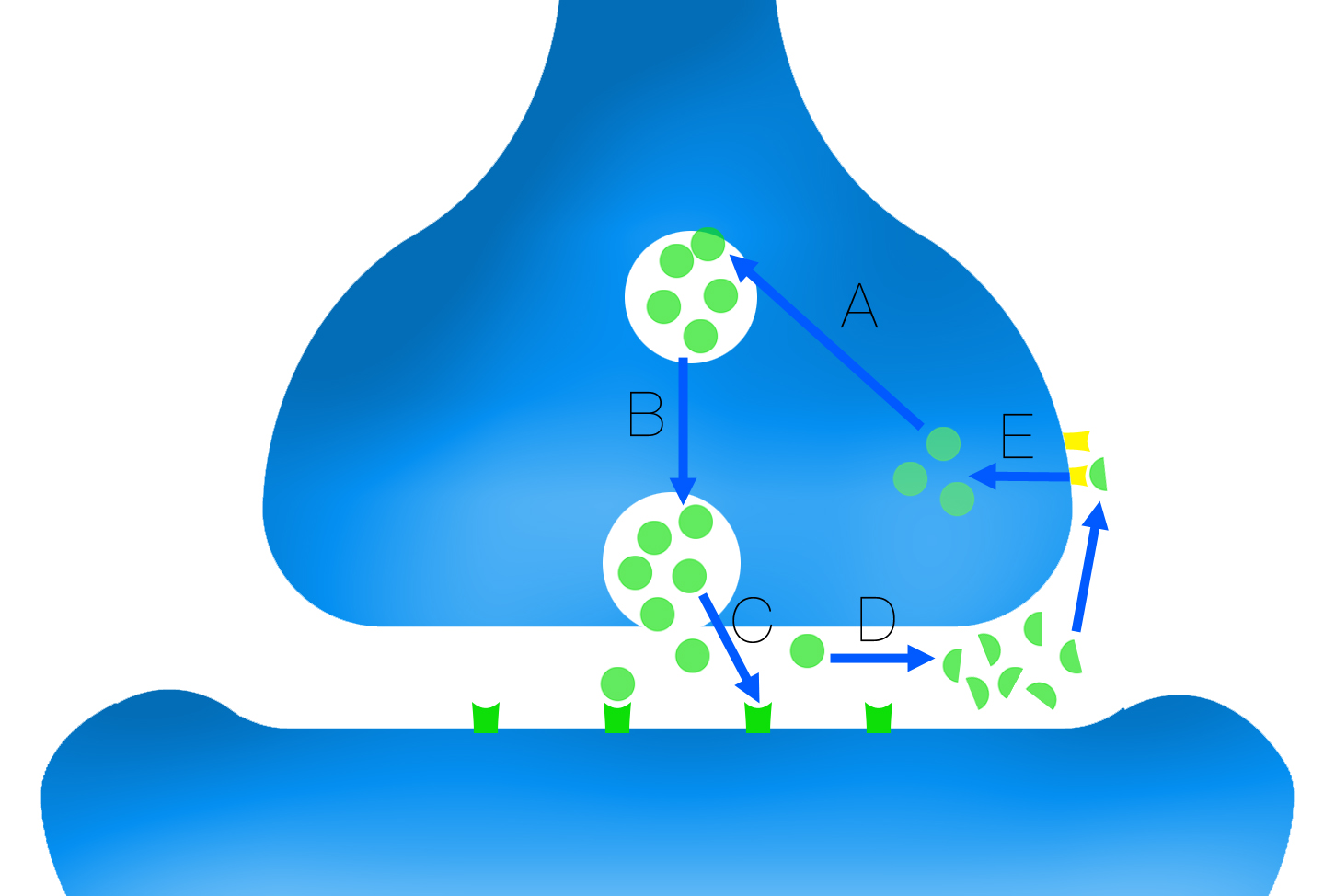WBR0587
Jump to navigation
Jump to search
| Author | [[PageAuthor::Serge Korjian M.D. (Reviewed by Serge Korjian)]] |
|---|---|
| Exam Type | ExamType::USMLE Step 1 |
| Main Category | MainCategory::Pathophysiology, MainCategory::Pharmacology, MainCategory::Physiology |
| Sub Category | SubCategory::Neurology |
| Prompt | [[Prompt::A 25-year-old male student is brought to the emergency department by his girlfriend after she noticed he was acting very unusually and complaining of severe chest pain. On admission, his heart rate is 121/min, blood pressure is 152/88 mmHg and temperature is 38.4 ᵒC (101.1 ᵒF). On exam, the patient is shaking and sweating profusely, his pupils are markedly dilated and poorly responsive to light with mild nystagmus noted. The resident suspects intravenous drug use after he finds track marks over both upper extremities. A urine toxicology screen is positive. Which of the following steps in the neurotransmitter cycle are affected by the drug most likely to be detected in this patient? |
| Answer A | AnswerA::A |
| Answer A Explanation | AnswerAExp::This refers to neurotransmitter integration into vesicles. Reserpine and vesamicol usually act by inhibiting vesicle formation. Cocaine has a different mechanism of action. |
| Answer B | AnswerB::B |
| Answer B Explanation | AnswerBExp::This refers to vesicle release into the synaptic cleft. The most commonly referred inhibitor of vesicle release is botulinum toxin that prevents the release of acetylcholine containing vesicles leading to flaccid paralysis. |
| Answer C | AnswerC::C |
| Answer C Explanation | AnswerCExp::This refers to neurotransmitter binding to specific receptors on the post-synaptic membrane. Neurotransmitter antagonists can exert their effect by this mechanism. |
| Answer D | AnswerD::D |
| Answer D Explanation | AnswerDExp::This refers to neurotransmitter degradation. Acetylcholinersterase inhibitors act by inhibiting the breakdown of acetylcholine at the synaptic cleft. Cocaine has a different mechanism of action. |
| Answer E | AnswerE::E |
| Answer E Explanation | AnswerEExp::This refers to the mechasim of action of cocaine which acts by inhibiting reuptake of several neurotransmitters, most importantly dopamine and norepinephrine. |
| Right Answer | RightAnswer::E |
| Explanation | [[Explanation::Cocaine is a powerful stimulant drug and one of the most commonly abused substances in the world. Acute cocaine toxicity usually presents with hallucinations and paranoid behavior, nausea, vomiting, chest pain, dyspnea, tremors, fever, tachycardia, mydriasis, nystagmus, and seizures. Physical exam usually reveals track marks, skin puncture wounds, and/or eroded nasal mucosa depending on the route of administration. While snorting cocaine is the most common route of administration, IV administration is used as well and is more commonly associated with overdose. Cocaine acts by inhibiting reuptake of several neurotransmitters, with the most prominent effect on dopamine and norepinephrine reuptake from the synaptic cleft. This causes an increase in neurotransmitter concentration at the synaptic cleft leading to the classic cocaine associated symptoms. Educational Objective: Cocaine exerts its effect by inhibiting the reuptake of dopamine and norepinephrine from the synaptic cleft. |
| Approved | Approved::Yes |
| Keyword | WBRKeyword::Cocaine, WBRKeyword::Reuptake inhibitor, WBRKeyword::Neurotransmitter |
| Linked Question | Linked:: |
| Order in Linked Questions | LinkedOrder:: |
